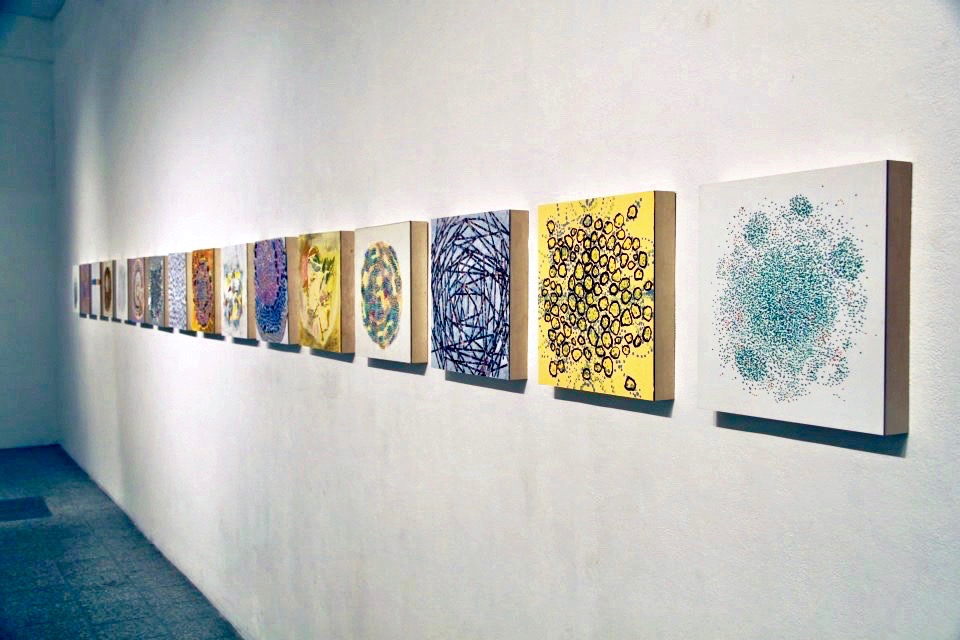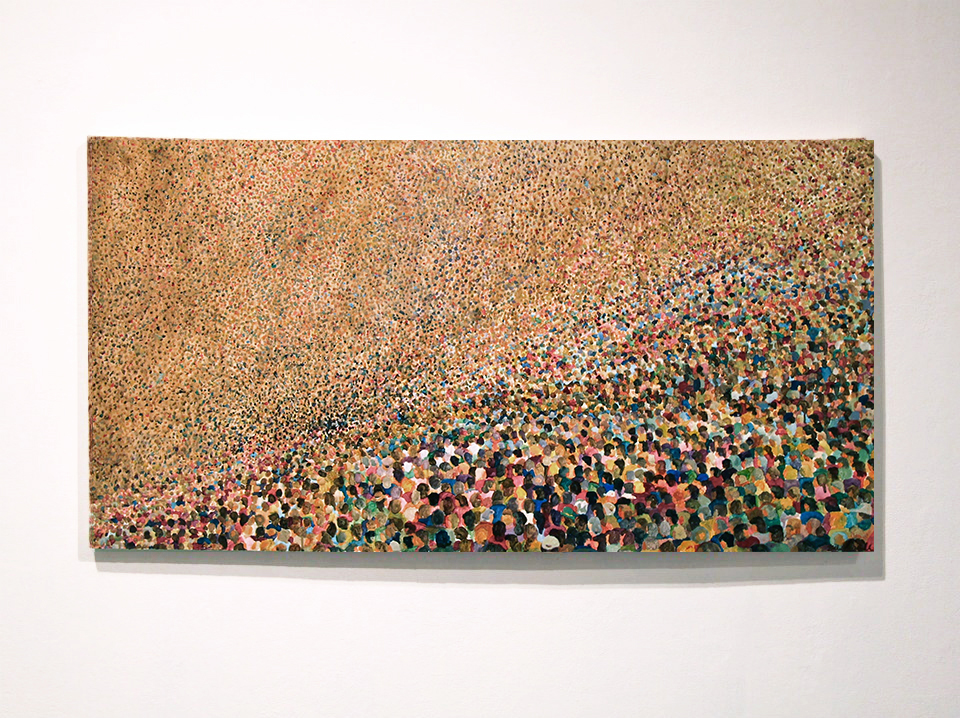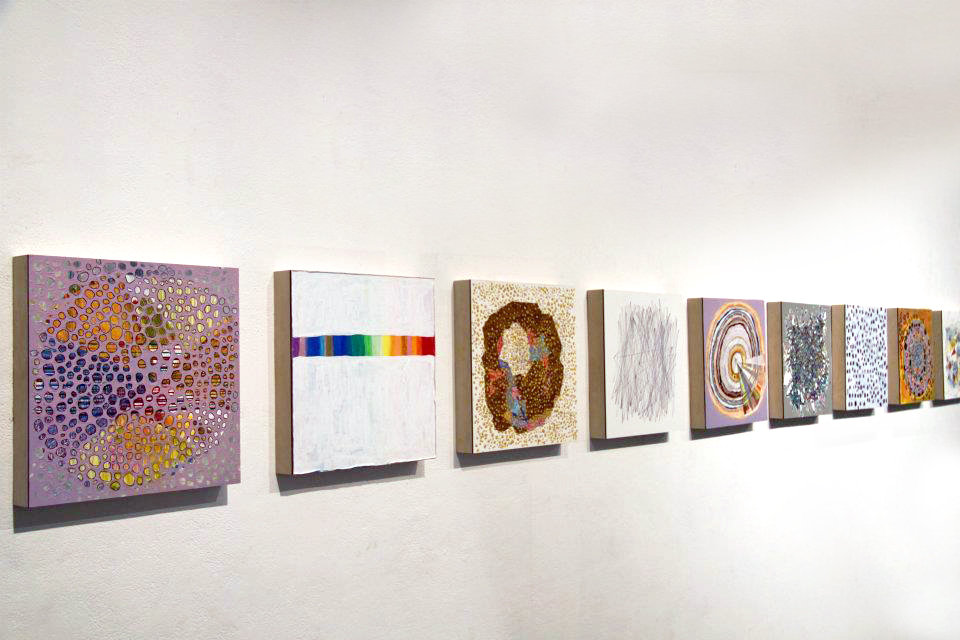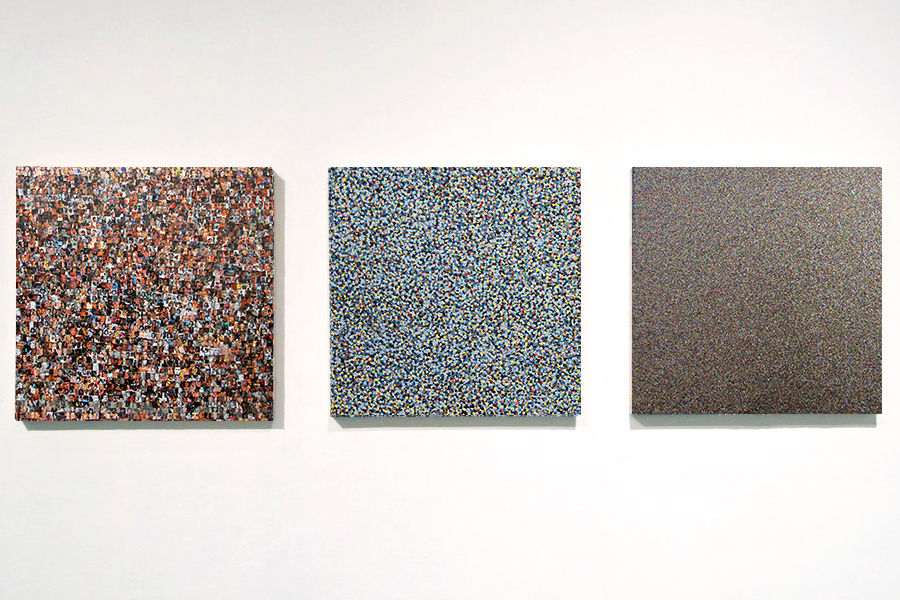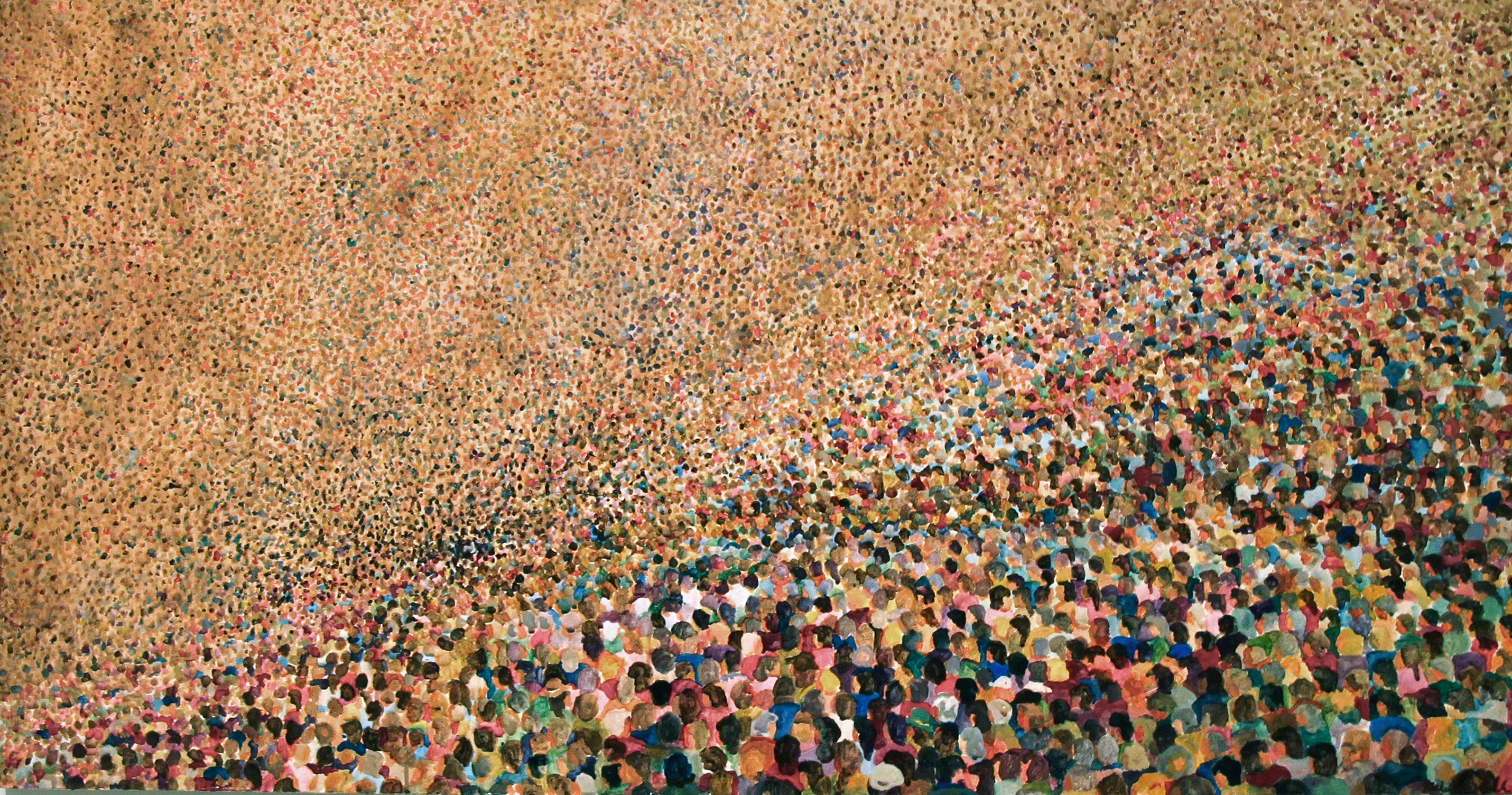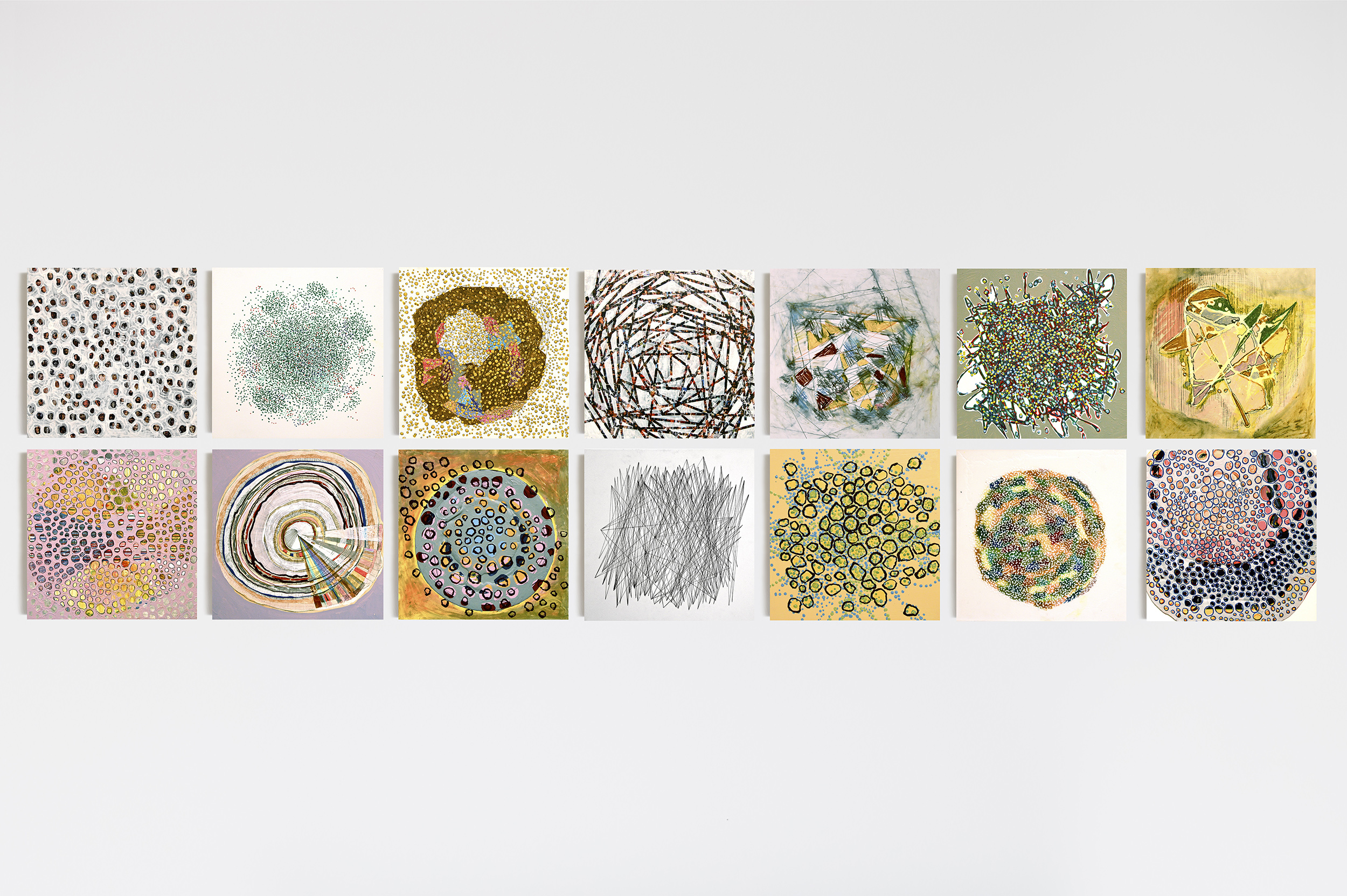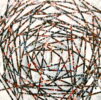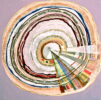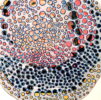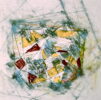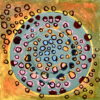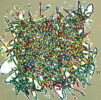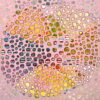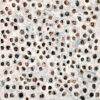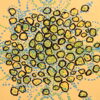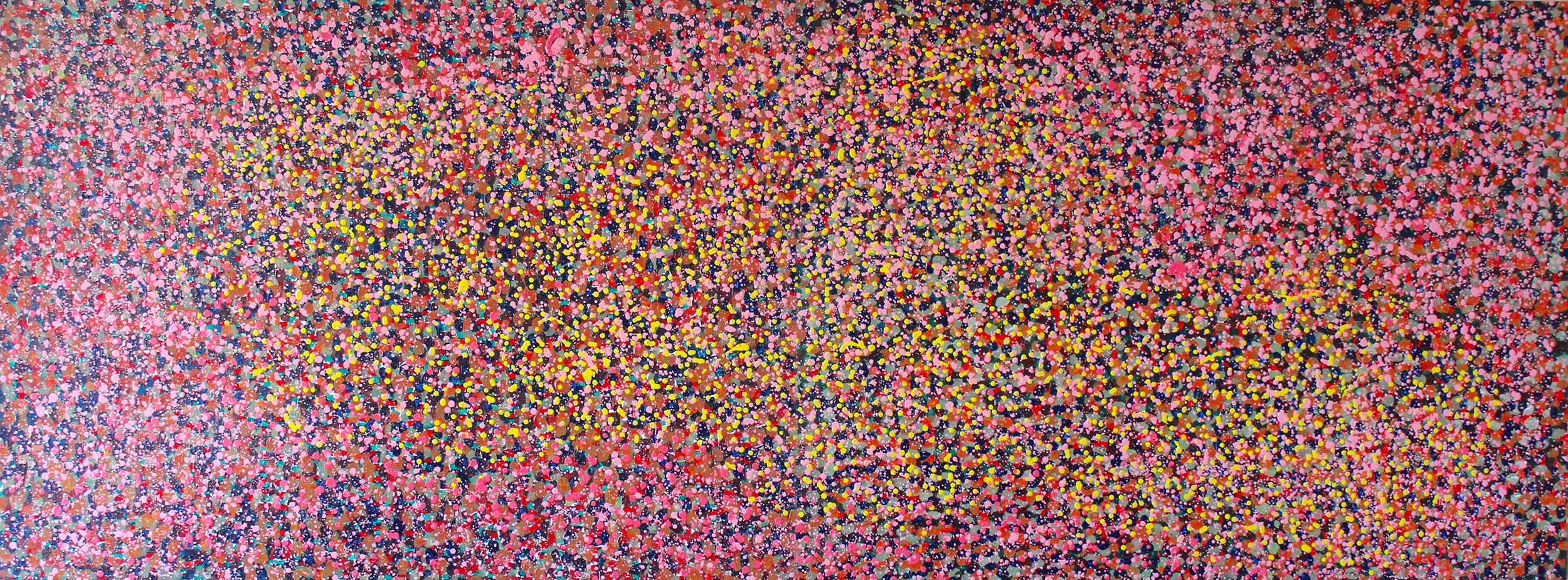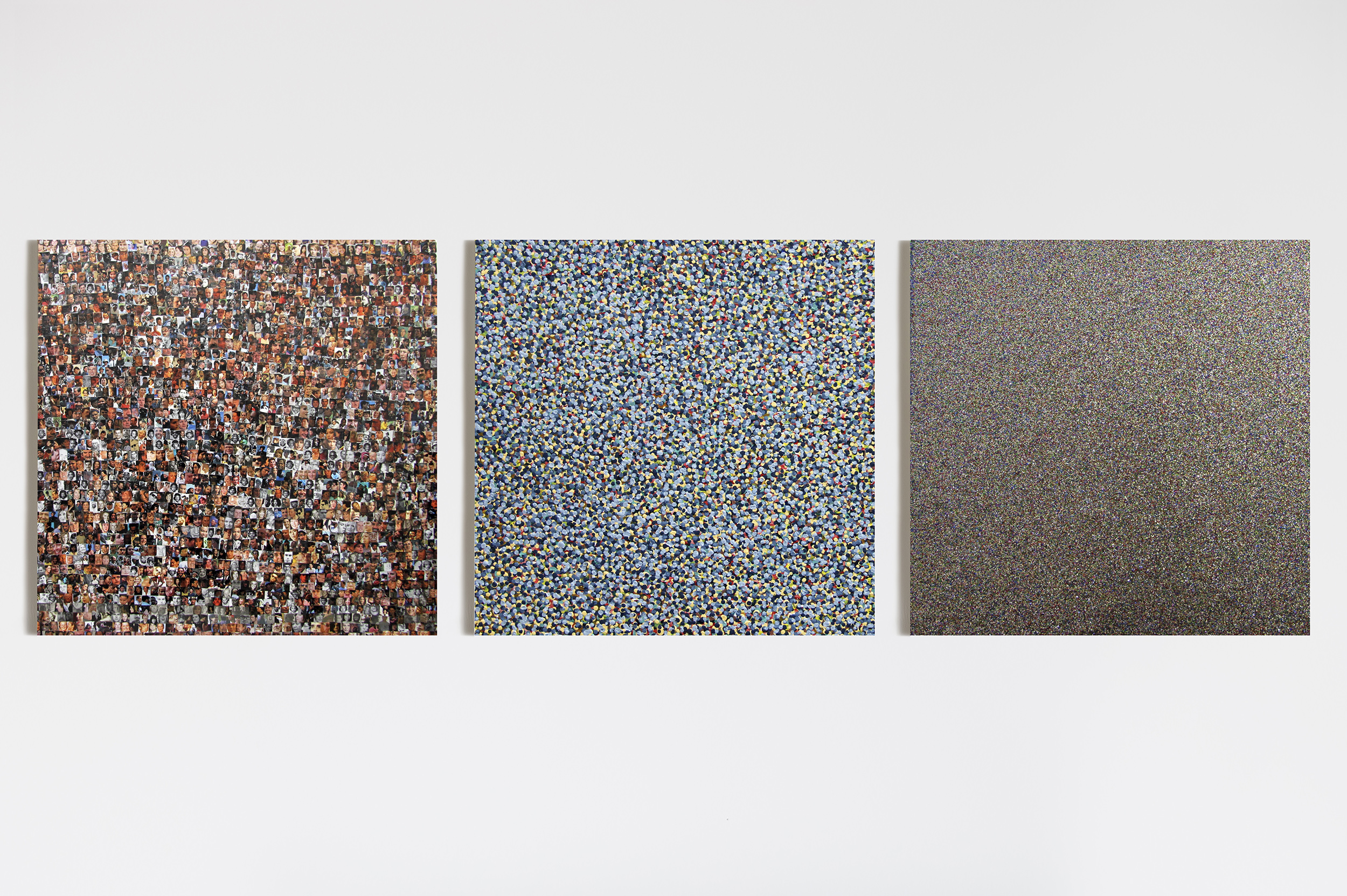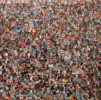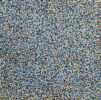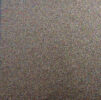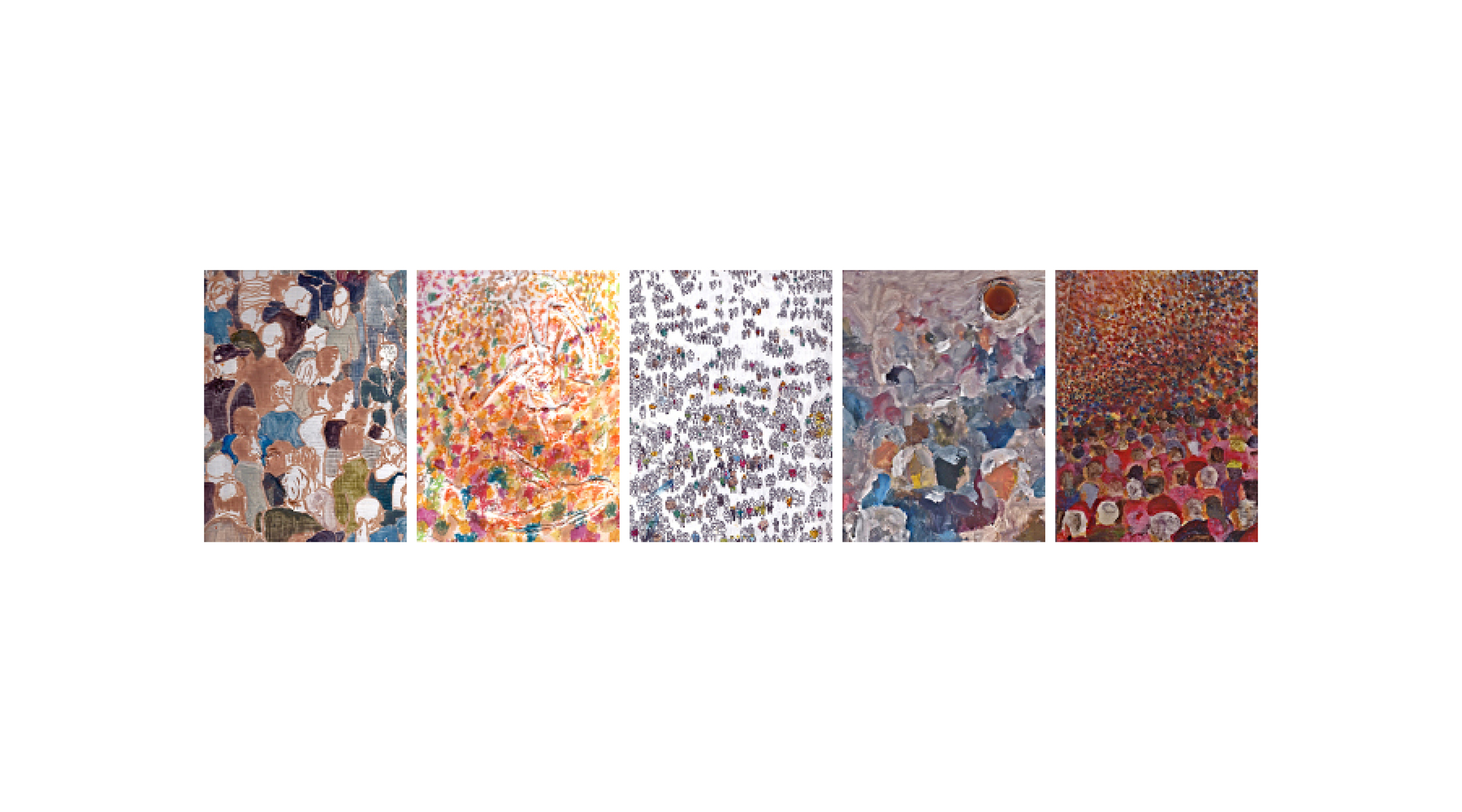“A cursory glance around her studio reveals paperback-size panels to several-foot long canvases, as well as some insights into her current fascinations: magazine clippings of stadium crowds; faded disposable camera photographs of skyscrapers’ reflective windows; an architect’s discarded cardboard cutout; a macro-evolutionary, paleo-biological text entitled Networks: The Vital Principle.”
— American Contemporary Art
From Neuron to Networked Society
From Neuron to Networked Society compares digital social networks to tangible relationships between people. This series alternates between the human form and a single pixel, which represents a single life. This series delves into the following: at what point do we acknowledge an individual life relative to a collective group? Do people too often get reduced to a statistic or number? How do we comprehend the vast number of us while maintaining our sense of humanity?
More than ever before, humans overpopulation is a common part of discussions. We are becoming more urbanized than ever before and socially connected than we ever thought possible. What used to be a series of scattered tribes and traditions has become a global society. With a global population exceeding 7 billion, our understanding of what we thought possible as a species is changing.
Humankind exists in the farthest reaches of the planet, with diverse geographic and cultural backgrounds, yet today we are connected more than ever before—whether linked by environmental changes, resources, the Internet or mobile phones, we are intricately bound together. Like ants, bees, mole rats, and termites, we are a superorganism. We require the efforts of many and collaboration across boundaries to maintain the collective survival and well-being of all. So what are we to do when it comes to maintaining our singular selves, our specific families, our respective communities?
This collection examines the remarkable transition from individual to collective identities. Somehow, and in a relatively short time, the role of the individual is less important. Why so? The fate of biodiversity and resources depends on our collective efforts. Humanity is remarkably interconnected, bound by our inherent DNA as well as our capabilities to create ripples of impact between each other. This reality might sound daunting, but perhaps the reality that we are all part of something bigger than ourselves could viewed as uplifting.
The awe of human connectivity is realized in Social Unit, a continuous-line drawing of hundreds of people. This work conveys how all humans – no matter who and where they are – are interconnected and related. A Million to One and Crowd Studies amplifies this message by showing large groups of people part of something bigger as a vast sea of people acts as one unified form. One of the most amazing capabilities of the human race is how it historically proves its power in numbers. Crowd Links expands this idea by reacting to the theory of six degrees of separation. Though we may not directly know those around us, we may have friends-of-friends connecting us, which reminds us that no one is alone.
Perhaps being reduced to a pixel, as pictured in the triptych titled A Single Speck, is diminishing experience for some. A Single Speck takes hundreds of cut-out faces collaged on panel juxtaposed to two other panels, one covered in tiny painted dots and the other coated with specks of glitter. This series depicts the theme of scaling and reduction for humankind, as it moves from a vast population of people to a single dot. Visualizations of crowd data is also depicted in Networks: A Vital Principle featuring 18 depictions of social networks and Swarm, a vast sea of data points.
